The Fauvism Art Movement was a short-lived but impactful art movement that emerged in the early 20th century. It was known for its bold use of colour and radical departure from traditional representation. Fauvists aimed to evoke the viewers’ reactions through the use of unique brushstroke techniques and loud colour choices to represent light and shadows. In this article, we will explore the famous paintings of the Fauvism art movement, providing insights into the lives and creative processes of the artists who embraced this revolutionary style.
What type of art was created during the Fauvism period?
Oil paintings with thick brushes and impasto painting techniques.
Fauvism was created and popular during which years?
1904 to 1910 is when Fauvism became popular.
Where was Fauvism artwork made and popularised?
The Fauvist movement began in France and spread across Europe
Who are some famous Fauvist artists and artworks?
Charing Cross Bridge by André Derain
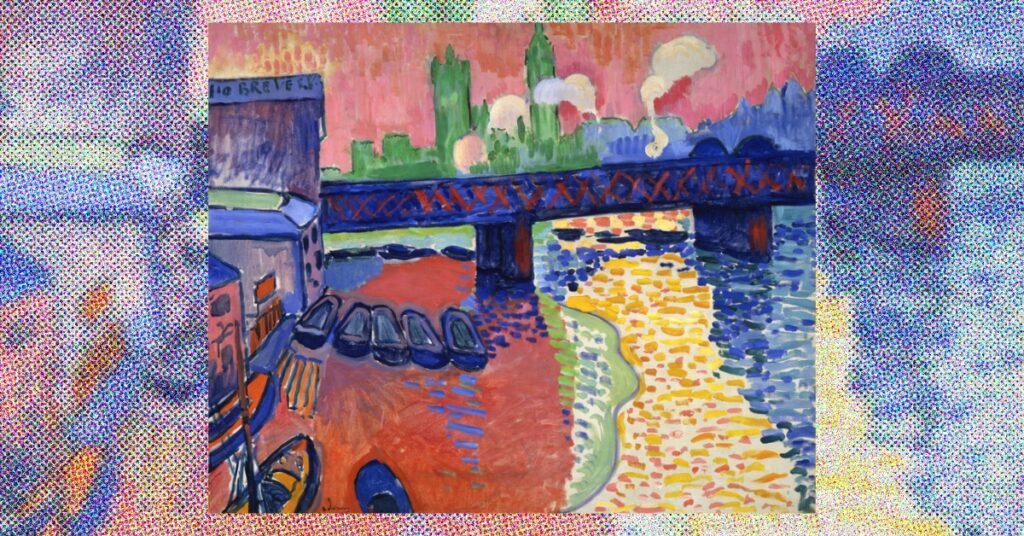
The River Seine at Chatou by Maurice de Vlaminck
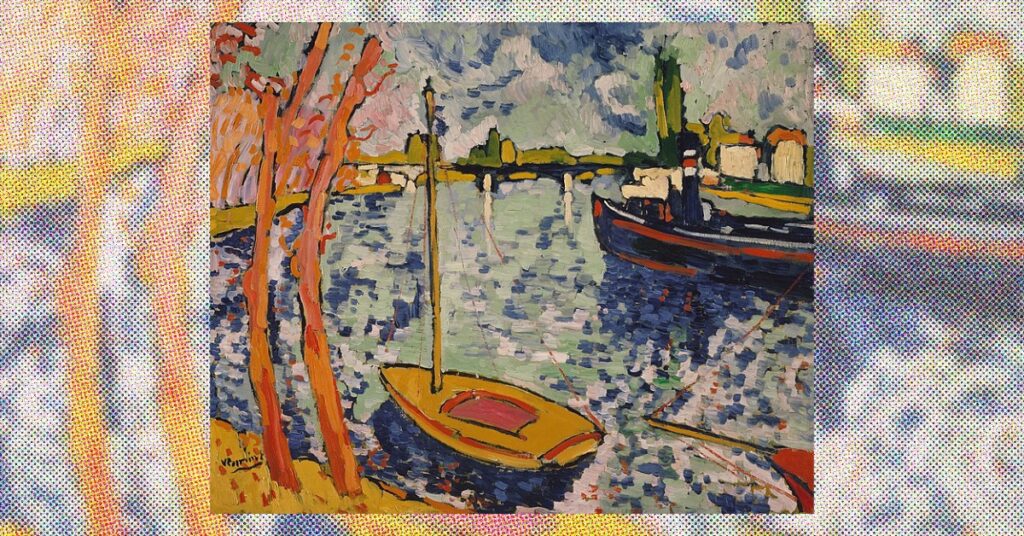
Woman with a Hat by Henri Matisse
Which art movement(s) came before the Fauvism period?
Post-impressionism and Pointillism were the art movements that came before Fauvism.
Which art movement(s) came after the Fauvism period?
Neo-Fauvism came around the 1920s after the Fauvist art movement.
What is unique about Fauvism?
If you paint an apple, it is likely, that you will pick red. The lighter areas of the apple might be a lighter version of red and gradually leading to light pink. Conversely, the darker areas of the apple will be maroon to represent shadows and then darker reds for darker areas. In Fauvism, if the apple is red then maybe the darker areas will be a cool blue and the lighter areas will be a blazing orange. The cool blues and blazing orange may represent the sweet yet firm apple. This is what makes fauvism unique, the use of vivid colours to represent shadows and highlights so that you can pack more meaning into the painting. These vivid colours were mostly painted in oil paintings using thick paint for an impasto effect. However, digital artwork can also make commendable fauvist pieces through conventional colour fills in vivid colours. The light and shadow work in these paintings can be so vivid, that it almost looks like the image of a heat-signature.
Top 7 Artworks of the Fauvist Art Movement
Woman with a Hat by Henri Matisse
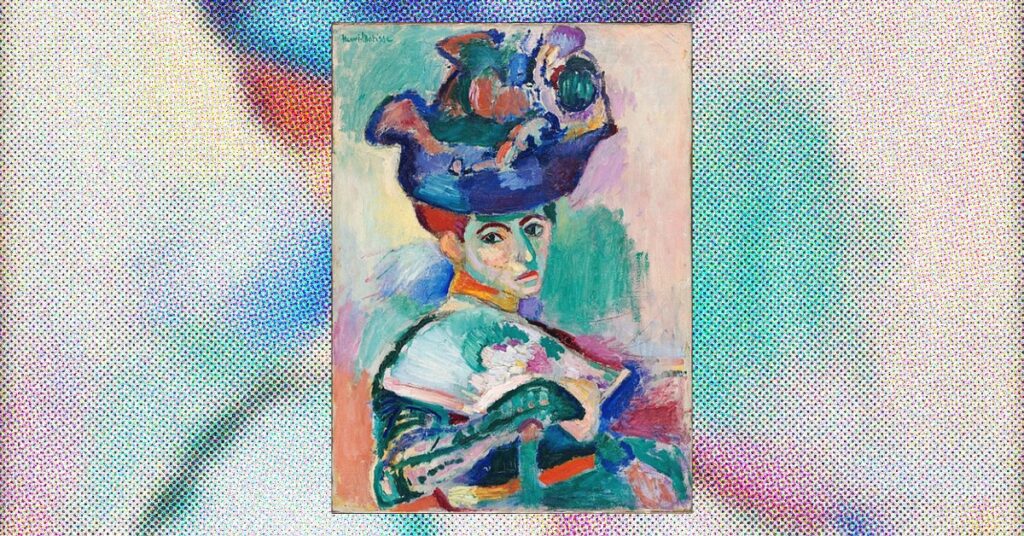
Henri Matisse’s “Woman with a Hat” (1905) is a seminal work in the Fauvist movement, known for its vivid and non-representational use of colour. The painting portrays Matisse’s wife, Amélie, wearing a flamboyant hat.
“Woman with a Hat” marked a significant turning point in Matisse’s career. The painting was initially met with shock and criticism when it was exhibited at the Salon d’Automne in 1905. Critics derided it as “wild” and “incoherent,” but Matisse and his fellow Fauvist painters embraced the label, taking pride in their bold and unorthodox use of colour. Shadows on the face were green and light on the hair was red. The work exemplifies Matisse’s commitment to capturing the emotional essence of his subjects through colour.
Joy of Life by Henri Matisse
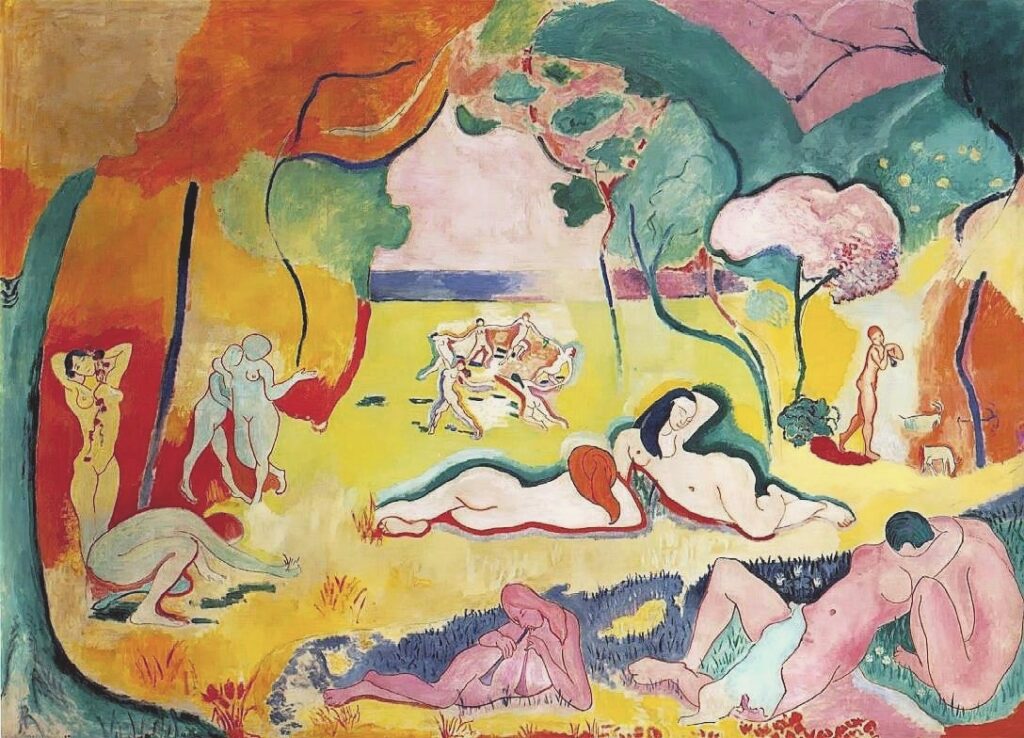
Henri Matisse’s “Joy of Life” (1906) is another iconic Fauvist masterpiece, celebrated for its vibrant and expressive use of colour. The painting portrays a group of nude figures in a lush, abstract landscape.
“Joy of Life” reflects Matisse’s fascination with colour as a means of conveying emotions and sensations. The artwork was originally created as a commission for Russian collector Sergei Shchukin and became one of Matisse’s most renowned pieces. It captures the euphoria of the Fauvist movement and the artist’s ability to depict the essence of life through colour.
The Dance by Henri Matisse
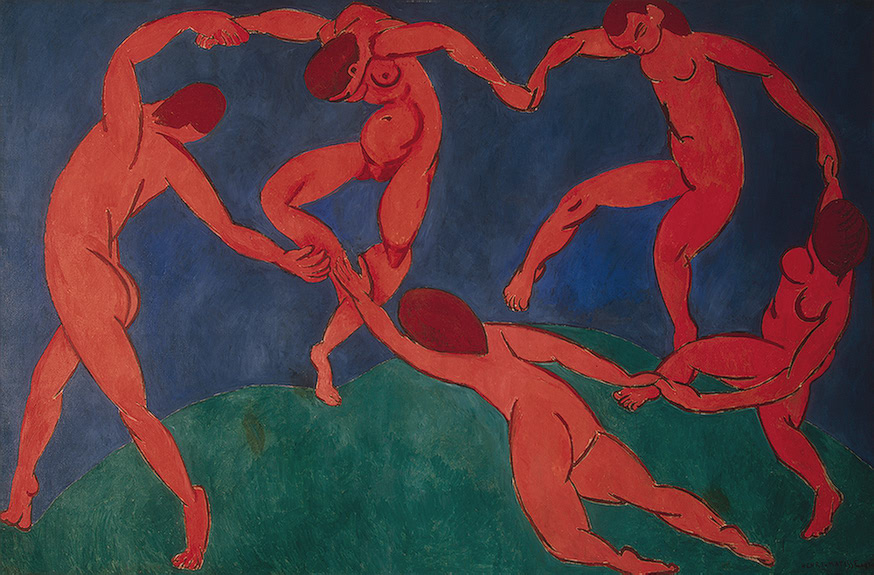
Henri Matisse’s “The Dance” (1909-1910) is a monumental Fauvist painting that is both stunning and strange. The artwork features a group of dancers in a circular formation, their figures reduced to basic, vivid shapes.
“The Dance” is part of a two-panel work created for Russian art collector Sergei Shchukin. The painting represents a significant evolution in Matisse’s Fauvist style, as he moves toward a more abstract and simplified representation of the human form. It remains a celebrated example of how Fauvism embraced vibrant colours and expressive distortion to convey human emotion.
Luxe, Calme et Volupté by Henri Matisse

Henri Matisse’s “Luxe, Calme et Volupté” (1904) is one of the early Fauvist paintings and is known for its innovative approach to colour. The artwork portrays a group of nude figures lounging by the sea.
“Luxe, Calme et Volupté” was inspired by Charles Baudelaire’s poem “Invitation to the Voyage.” Matisse’s vision employs both, techniques of pointillism and fauvism. The result is that the painting with its carefully selected colour palette almost has a “summer vibe” in a manner of speaking.
The Open Window by Henri Matisse
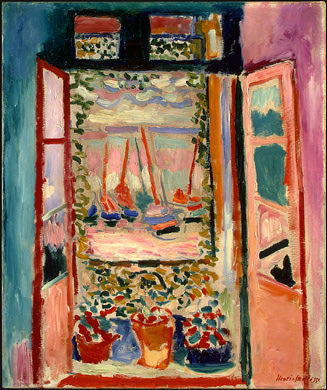
Henri Matisse’s “The Open Window” (1905) is a striking Fauvist work that features a vibrant view of the Mediterranean coast. The painting is celebrated for its vivid colours and non-representational style.
“The Open Window” reflects Matisse’s fascination with outdoor spaces and the ability of colour to transform an ordinary scene into a vision of emotional intensity. The Fauvist movement, as embodied in this work, challenged traditional artistic conventions by prioritising emotional expression through colour over faithful representation.
The Blue Nude by Henri Matisse
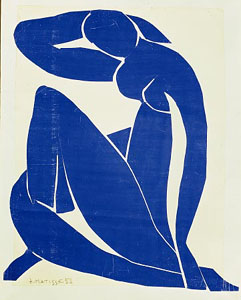
Henri Matisse’s “The Blue Nude” (1907) is a provocative Fauvist painting that portrays a nude female figure in a radical and non-naturalistic blue hue. The work is marked by its stark, angular lines and the powerful use of colour.
“The Blue Nude” was initially created as part of a series for a Salon des Indépendants exhibition. The painting shocked viewers with its bold use of colour and the unconventional depiction of the female form. This artwork shows Matisse’s commitment to conveying the emotional intensity of the human figure through colour and abstraction.
Landscape at Collioure by André Derain
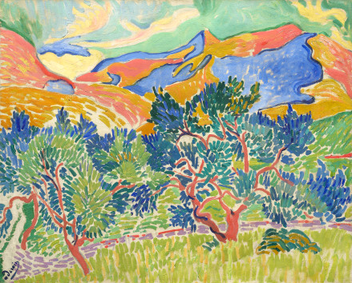
André Derain’s “Landscape at Collioure” (1905) is a celebrated Fauvist painting that captures the coastal town of Collioure in a bold and non-representational style. The artwork is characterised by its vivid use of strokes and colour, including bright greens, pinks, and blues.
Derain, along with Henri Matisse, were some of the pioneers of Fauvism. “Landscape at Collioure” was created during a summer spent with Matisse in the town of Collioure, a period that would prove influential for both artists. The work shows the Fauvists’ desire to express the emotional and sensory aspects of a scene through intense colour.
The Dance by André Derain
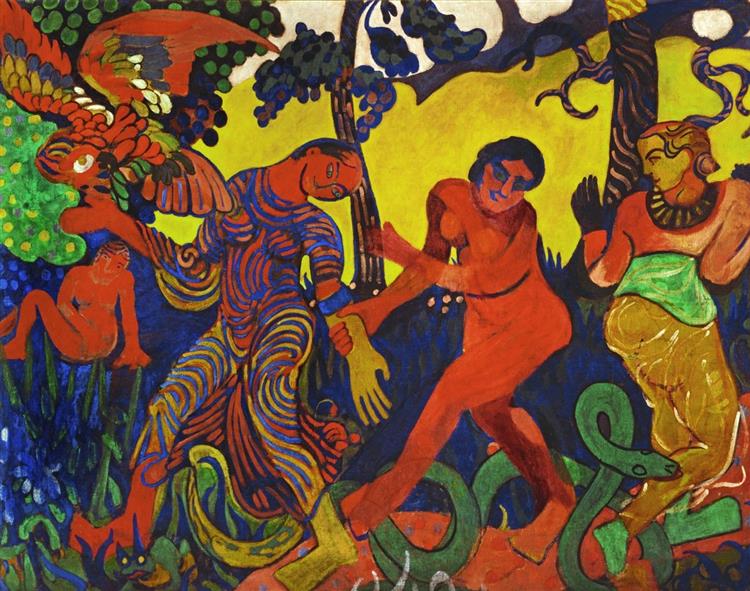
André Derain’s “The Dance” (1906) is a vibrant Fauvist painting that captures a joyous and dynamic scene of dancers. The artwork is known for its bold use of colour and its celebration of movement.
“The Dance” is one of Derain’s notable works and showcases the Fauvist preoccupation with the emotional and sensory aspects of movement. The painting captures the exuberance of dance through golden yellows, vivid reds and electric blues.
*Images from Wiki Commons






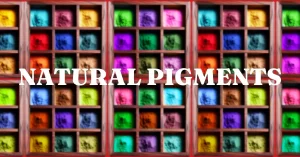
0 Comments